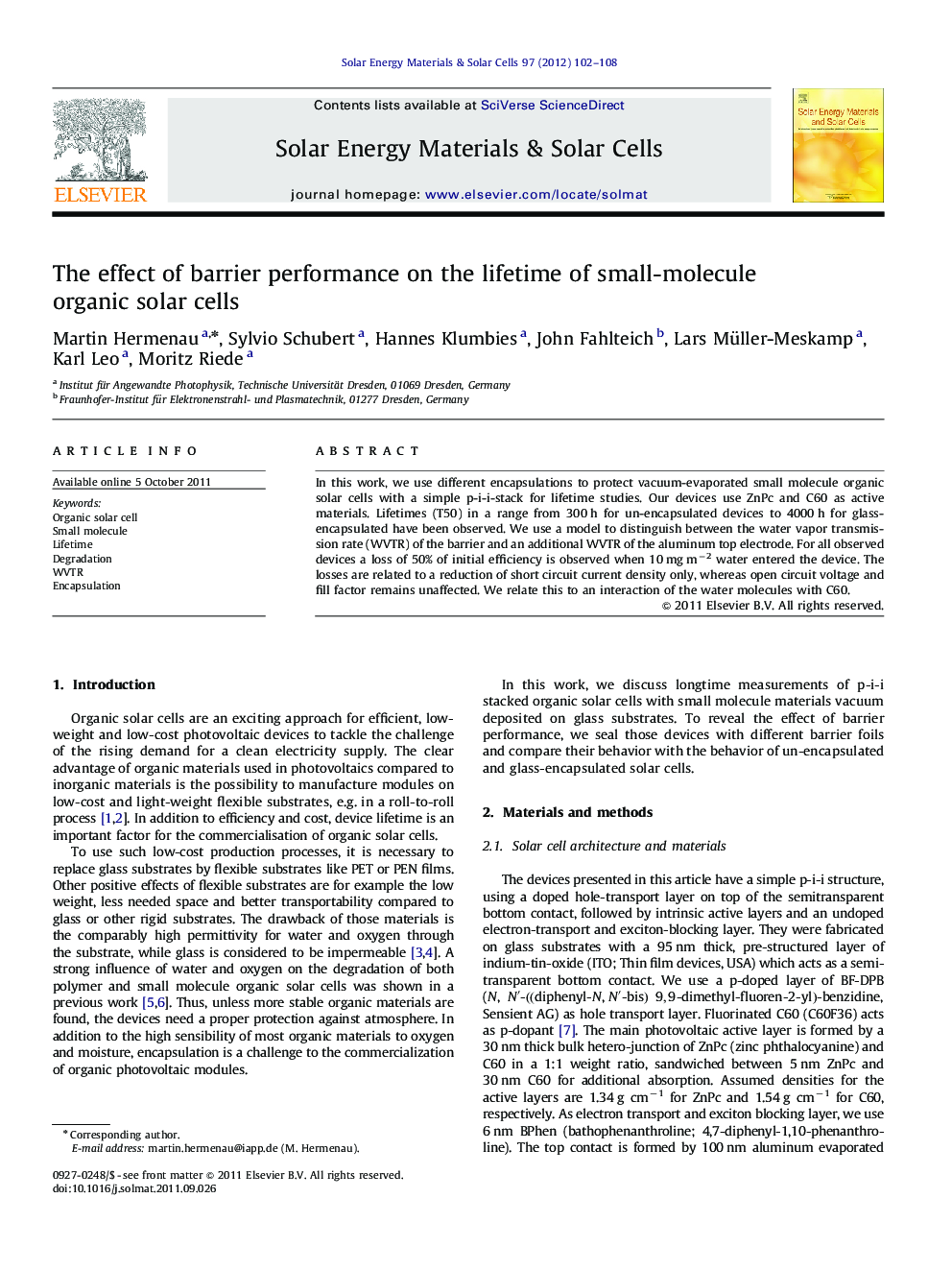| Article ID | Journal | Published Year | Pages | File Type |
|---|---|---|---|---|
| 78653 | Solar Energy Materials and Solar Cells | 2012 | 7 Pages |
In this work, we use different encapsulations to protect vacuum-evaporated small molecule organic solar cells with a simple p-i-i-stack for lifetime studies. Our devices use ZnPc and C60 as active materials. Lifetimes (T50) in a range from 300 h for un-encapsulated devices to 4000 h for glass-encapsulated have been observed. We use a model to distinguish between the water vapor transmission rate (WVTR) of the barrier and an additional WVTR of the aluminum top electrode. For all observed devices a loss of 50% of initial efficiency is observed when 10 mg m−2 water entered the device. The losses are related to a reduction of short circuit current density only, whereas open circuit voltage and fill factor remains unaffected. We relate this to an interaction of the water molecules with C60.
Graphical AbstractFigure optionsDownload full-size imageDownload as PowerPoint slideHighlights► We use a serial-resistance-analogy model to describe the encapsulation. ► A 100 nm thick aluminium layer is treated as second water barrier. ► A WVTR of 8×10−4gmd−1 for the aluminium layer is found. ► Only the water in the organic layers is enough to describe the ageing process. ► An amount of 10 mg m−2 water in the organics is needed to deteriorate the PCE to 50%.
